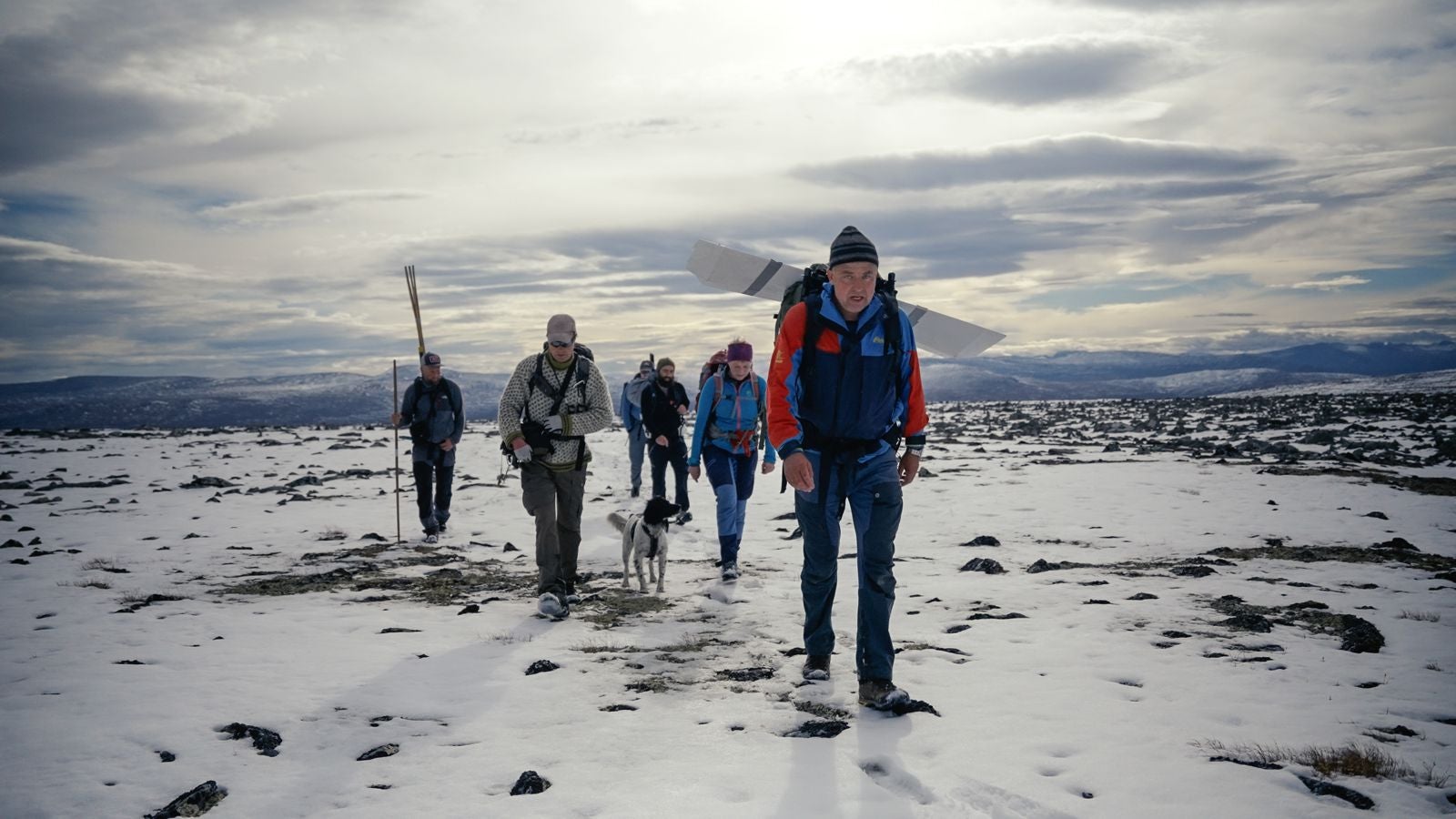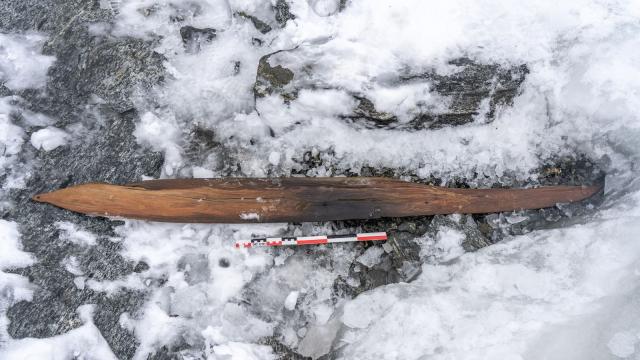Seven years ago, archaeologists found an exquisitely preserved prehistoric ski on a Norwegian mountaintop, and the team has been searching for the missing counterpart ever since. Incredibly, they are now claiming to have found the missing relic.
Archaeologists with the Secrets of the Ice Program uncovered the first ski in 2014, at the Digervarden ice patch in Norway. The 1,300-year-old wooden ski was found in an incredible state of preservation, featuring binding made from birch rope and leather straps. It was only the second prehistoric ski found with its binding still attached, the other being a slightly older ski found in Mänttä, Finland.
Because skis come in pairs, the archaeologists figured it possible that both pieces were abandoned at the same time and place. But they struggled to find the counterpart, despite continually monitoring the area in the ensuing years. Satellite imagery from earlier this year showed that ice in the area had receded significantly, prompting them to send an archaeologist to investigate. On September 20, archaeologist Runar Hole, along with his expedition companion Bjørn Hessen, spotted the ski sticking out of the ice, wrote team member Lars Pilø in a Secrets of Ice article describing the discovery.
In an unbelievable stroke of luck, the missing ski was found just 16 feet (5 meters) from the spot where the first ski was found seven years earlier. The ski was stuck firmly in the ice, and because Hole didn’t have the tools to dislodge it, he and his partner were forced to leave it behind — but not before recording its precise location with photography and GPS.

A recovery team was quickly assembled, but nature had other plans. A “storm descended on our high mountains before we were able to return with proper equipment and a larger team,” Pilø wrote. “Along with it came snowfall — just what we wanted to avoid.” The team had to wait and hope that the snow didn’t bury the ski beyond reach. Doing “fieldwork in the high mountains in late September is marginal business,” he added.
On September 26, the team — equipped with ice axes, gas coolers, and packing materials — conducted an arduous three-hour ascent to the location. They arrived to a fresh blanket of snow, with the ski was nowhere to be seen. Using the GPS coordinates and photos, they managed to find it buried beneath 12 inches (30 cm) of freshly fallen snow. After clearing the snow away, they found that the ice “still held an iron grip on the back of the ski,” Pilø wrote.
Using an axe, a team member carefully chipped away at the ice surrounding the relic. Warm water was then used to dislodge the ski from the ice beneath it. Pilø said the “moment of truth” came when the archaeologists flipped the ski over and the binding appeared, revealing the “same type of binding as on the ski found in 2014,” This meant that the team had found the missing ski, and that they could reunite the pair after 1,300 years.
“The new ski is even better preserved than the first one,” said Pilø. “It is an unbelievable find.”

The second ski measures 6.1 feet (1.87 meters) long and 6.7 inches (17 cm) wide, making it slightly bigger than the one found in 2014. The superior preservation is likely a result of the ski being buried deeper in the ice. It was found with three twisted birch bindings, a leather strap, and a wooden plug that went through a hole at the foothold. The upper part of the toe binding was missing from both skis. The newly discovered ski appears to have gone through multiple repairs, which suggests it was a well-used and valued item.
The archaeologists are trying to figure out why these skis were abandoned and what happened to the Iron Age skier. As Pilø writes:
Did a hunter leave behind the skis? Maybe a sudden snowfall could have buried them beyond recovery? This is perhaps not so likely. Presumably, the hunter would have placed the skis upright in the snow to make it easy to spot them coming back. A small avalanche could perhaps be the culprit.
Another possibility is that there was an accident. Maybe the skier fell and destroyed the toe bindings in the fall? The skis could no longer be used and were left behind. An argument against this explanation is that the skies must have had a significant value. One of them had repairs. In addition, they have holes at the front which would have made it easy to drag them behind in a rope when exiting the mountains. So why leave them behind when they could have been brought along and repaired in the lowlands?
Pilø wonders if an accident left the owner dead or seriously injured. If that’s the case, the frozen remains of this individual could be buried somewhere in the Digervarden ice patch. It’s difficult to say, but with human-caused climate change causing the ice to melt, archaeologists are finding all sorts of stuff on this mountain. Finding the bodily remains of this skier is not outside the realm of possibility.
More: Archaeologists Open Frozen Wooden Box Found on Viking Mountain Pass.
